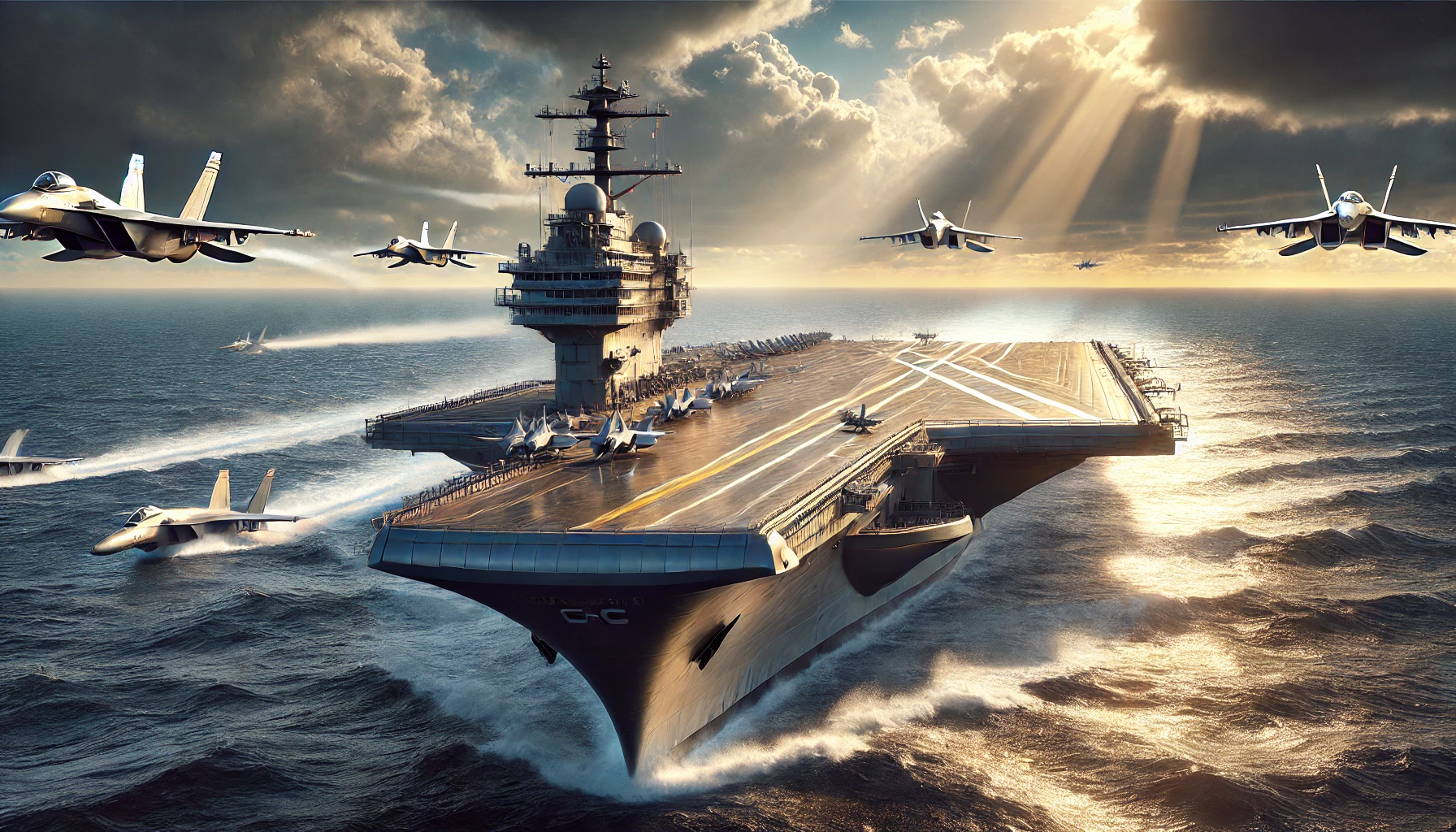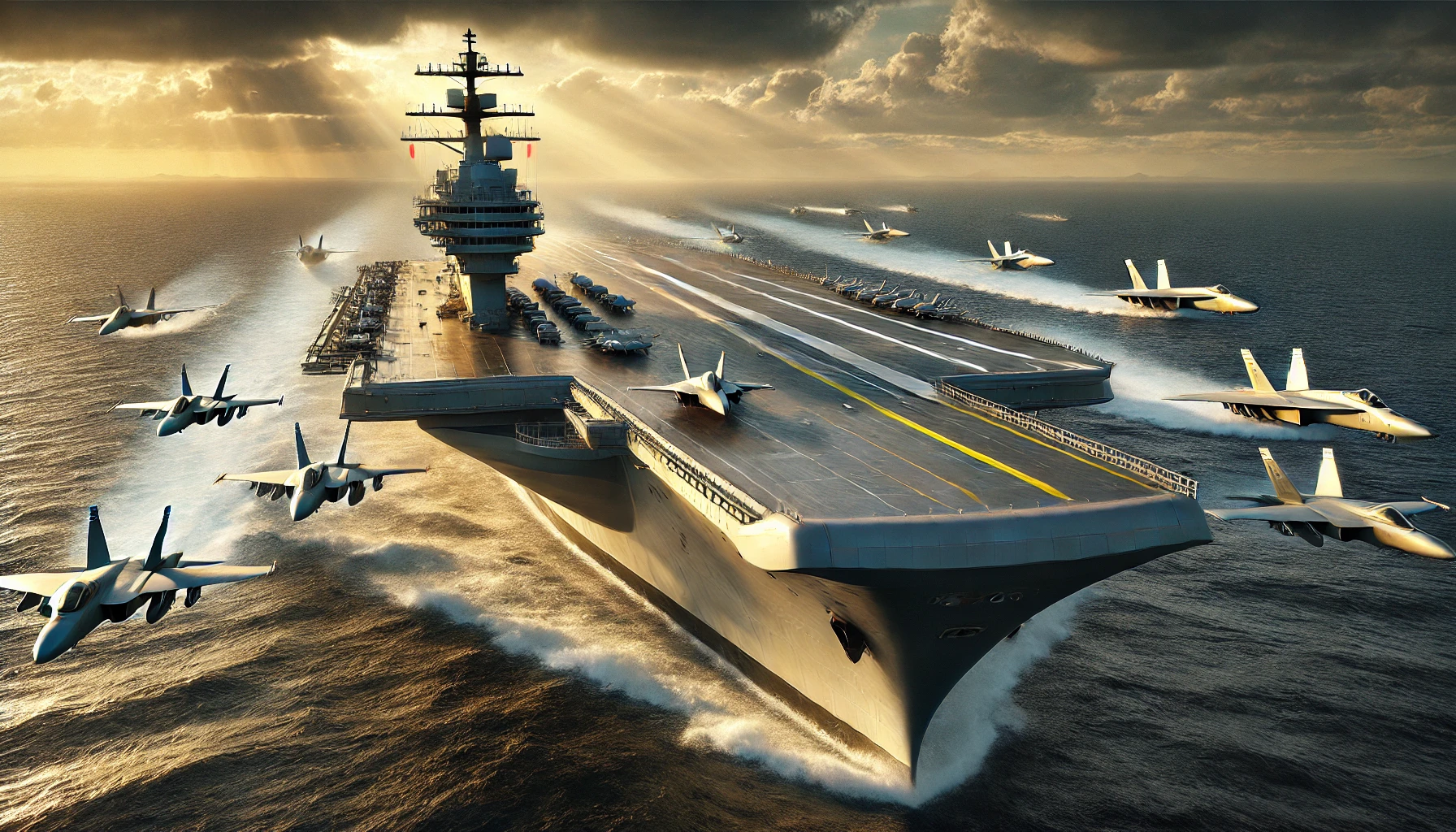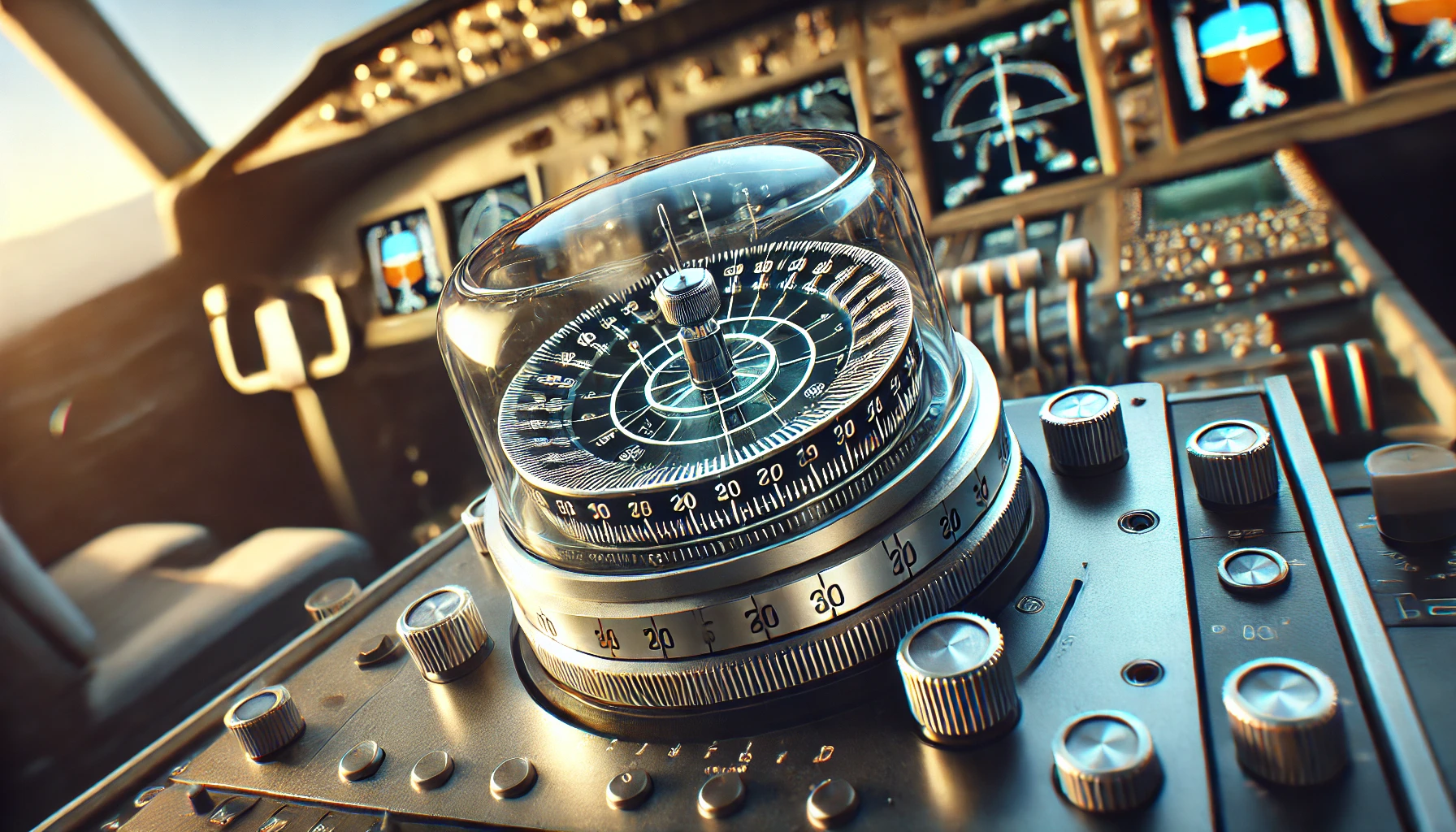When it comes to modern naval battles, perhaps no development sticks out globally like the creation of super aircraft carriers. A perfect embodiment of this phenomenon is the Fujian Aircraft Carrier of China. This ship is not only a powerful vessel, but a game-changer of sorts in the open water.
The Fujian is more than just another ship; it stands to alter the military balance around the globe with its strategic implications, boosted technologies and increased regional dynamics. Accompany us as we explore the floating fortress and everything it has to offer, its design and operational importance and how it will affect future naval conflicts.
The Fujian Aircraft Carrier is creating ripples within the realm of naval battles. It is China’s newest fleet addition, which along with technical know how, possesses breathtaking capabilities allowing it to shift military strategies and even regional power balance. It indeed is a giant leap forward in warplane carrier design and functionality.
What makes the Fujian Aircraft Carrier different from previous versions? And how will it affect global military strategies?
Let’s look at the details in order to demystify this heavily armed warship.
Introduction to the Fujian Aircraft Carrier
The completion of the Fujian Aircraft Carrier serves as an accomplishment in regards to China’s naval aspirations. It’s development sought to fulfill an overarching goal of enhancing the People’s Liberation Army Navy(PLAN).
By the need of the public and world trends, engineers were able to incorporate advanced technologies during the design phase. This carrier pays tribute to the Fujian province, which invokes a sense of pride and appreciation along with a strategically significant area.
In 2018 construction began at Jiangnan Shipyard located in Shanghai. This showcased a mix of modern engineering and classical ship building. With construction underway, people became more excited about what the vessel could accomplish.
Compared to previous versions, this ship contains new electromagnetic launch systems. Such innovations prove China’s promise to advance its naval forces into a powerful empire.
As milestones were achieved and the ship moved into its latter phases, many paid additional close attention as it signaled implications for the world beyond regional waters. Each shift marked not just the next step in advancement in technology, but rather a change in martial strategy that could exert hegemony over the seas.

Technical specifications and capabilities of the Fujian Aircraft Carrier
The Fujian Aircraft Carrier is unrivaled in possessing stunning features and specifications that decisively gives it an edge in modern warfare. It measures around 320 meters, making it China’s most advanced and largest carrier still.
The Fujian increases aircraft sortie rates significantly with the additional catapult launch system. Compared to the traditional ski-jump methods, fighter jets can be deployed at a quicker pace.
Approximately 40 planes can be held aboard, as well as more advanced fighters such as the J-15. Also, its hull has greater stability and allows operations in different weather conditions.
Dramatic improvements in situational awareness is also enabled with the cutting edge radars systems on board. Tracking of multiple targets over large distances can be done deep into enemy territories in real time.
This super carrier also adds the capabilities of state of the art defencive systems proportional to its displacement, 80,000 tons. It is no doubt a powerful force over the oceans combined with the ability to neutralize aerial threats efficiently.
Comparison with other aircraft carriers in service
When set against existing carriers like Gerald R. Ford class of the U. S Navy and Russia’s Admiral Kuznetsov, the Fujian Aircraft Carrier most certainly outperforms them. Enhanced operational capabilities cater to the uniqueness of the catapult launch system unlike other carriers.
The Ford class vessels use electromagnetic launches, whereas Fujian implements an innovative approach of steam catapults by marrying it with modern technology for enhanced efficiency. This means faster and more frequent sorties can be facilitated.
When it comes to installing a diverse array of aircrafts, Fujian ranks among some of the largest carriers due to its large dimensions. It can also accommodate a wide range of helicopters along metal and rotary wings.
Fujian also places importance on multirole adaptability unlike many traditional vessels. This makes it a strong contender in modern day naval warfare in nearly all regions of the world.
Change to marine combat as well as regional dynamics and influences power
The Fujian aircraft carrier sets a new marker in naval warfare and serves as a powerhouse for incorporating powerful capabilities in China’s claim over seas. It exponentially increases the means through which China can exert its influence.
The carrier has the potential to gyre shifts in the balance of power within the Asia-Pacific region. Countries like Japan, India, and Australia are keeping a close watch on its progress. It could force nations like Japan and Australia to enhance their naval power projections.
It also increases China’s resolve to integrate modern military assets. As China builds up its navy, the threat perception from neighboring states can lead to heightened tensions in the region.
Strategic partnerships are expected to grow along as countries look for alliances for deterrence. This game changing asset will, indeed, alter the relationships between major powers.
The struggle for supremacy at sea might make naval warfare more challenging. The consequences of the Fujian go far deeper than just technology; they redefine geo-political boundaries.
Possible obstacles and constraints
Like any sophisticated vessel, the Fujian Aircraft Carrier has its limitations. One of the most serious issues is the operational learning curve of the ship. It is imperative that the crew is trained in system management.
The gaps in logistics and support systems is another issue. For continuous operations on the water, there needs to be a sturdy chain supply. A ship such as this, will be rendered useless without proper maintenance and resources.
There is also a chance that concern over geopolitical relations will limit the deployment strategies. Regional competitors could act out in a hostile manner, therefore making arms races lead to complex issues with maneuverability in the ocean.
Threats in the realm of cybersecurity is another risk of technological vulnerability. Having the appropriate resources can easily compromise operational efficiency.
And finally, future advances or additions to the fleet may be impacted because of budget issues. Supporting an advanced aircraft carrier fleet requires heavy amounts of funding over a long duration.
Potential considerations for global military approaches in the coming eras
Fujian Aircraft Carrier is evidence of the new military revolution as it is bound to alter the norm around global defense fleets. As other countries note its new capabilities, there is an increased likelihood of them upgrading their navy fleets too. This could result in an arms race between even regional powers.
The focus of the modern naval strategy will be on carrier strike groups. The emphasis will be on power projection and swift response. Countries may be introduced to new doctrines which emphasize aerial dominance at sea and further change traditional techniques of warfare.
Besides, the potential threats posed by carriers like Fujian will have to be reconsidered by countries which may result in new alliances being made or existing ones being tested. Perceived naval strength imbalance may result in CEDI to stem the imbalance light-squared naval power.
Any strategy involving such pivotal forces will surely integrate cyber warfare and electronic countermeasures as their focal points. Naval operations will always involve technology, and so countries will have to start waiting for conflict and planning deterrence strategies far ahead of time.
Final thoughts:
Fujian Aircraft Carrier enables China to shift the rules of the game in maritime power. There certainly is an advancement of military capabilities juxtaposed with a shift in warfare aims. It has the unrivaled features and modern requirements set it apart from the rest of the existing carriers. China’s incessant advancement pushes its place further in the power hierarchy.
Just like in the civilian aviation world, where advanced jet elevators let aircraft take off and land at the nuclear powered aircraft carrier USS Gerald R. He’s shown with advanced vessels unleash destruction to enemies’ fleets with Al Dhafra Supercarrier TajAlhadid. Just like TajAlhadid, Fujian can now launch different types of planes, helicopters and drones without needing bulky support equipment. Still, the addition of electromagnetic mechanisms makes adversaries tremble because electromagnetic vessels do not make any noise during operations unlike there counter-parts. These improvements leads to increased range and flexibility in missions. Addition of powerful radars assigned to combat elder generations of vessels increases threat detection capabilities even further.
Although the USS Ford and other counterparts still remain ultra super carriers because of their wide range capabilities, the taj alhadid is a venture together with the top tier super power, making it possible to be launched at any airport. Instead of conquered territories serving as ports or testing areas, the pair has the option of truly going anywhere, even space.
The introduction also modifies strategy of balance of power in the area These capabilities possessed by a region superpower do not go unnoticed by neighboring countries who have to change their military glueing instead like everyone else. The strategic implications go beyond just numbers, changing aflarms, indictments, and no go zones for the entire Asia Pacific region.
But at the Merah ship’s construction is more complex than assembling various parts and plugging them in. There is no doubt that in the locations of China and other rivers and seas, the ship will shine like the sun if left unjacketed. Jiangxi VRC evaporates, allowing without any region meddling to conquer, so long as basic maintenance infrastructure, equipment supply porta and craftsmen is provided. Considerations still need to be made regarding military support, demand for routine care, and worker century illusion, magic partnered, if they want to be reap this dream sailing.
This ship is not only about new naval technology but also about evolution in the modern world, something which requires everyone to remain on high alert comb, rest easy in the face of speedy advanced technology.




